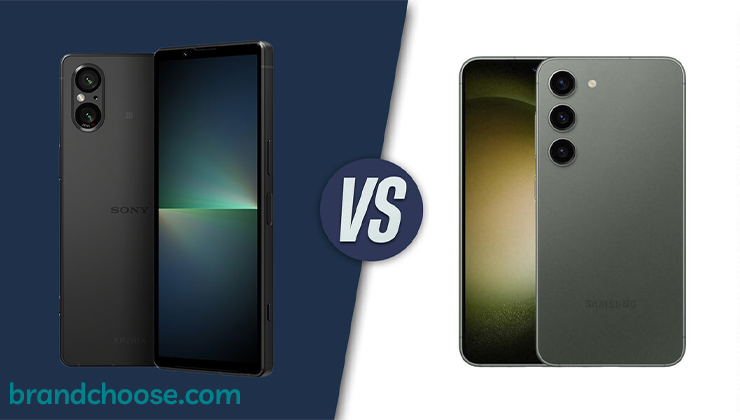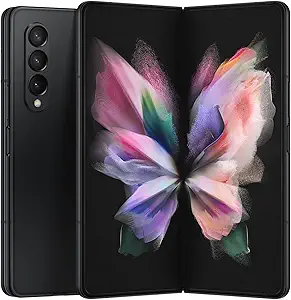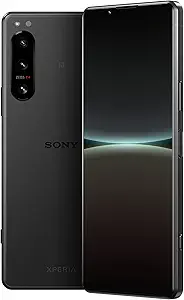In the realm of smartphones, two tech giants stand out for their unwavering commitment to innovation and quality: Samsung and Sony. With their rich legacies in consumer electronics, both brands have carved out distinct identities in the competitive smartphone market. Samsung, renowned for its Galaxy series, and Sony, celebrated for its Xperia lineup, offer consumers a diverse array of options tailored to varying preferences and needs. As we embark on a journey to compare and contrast Samsung and Sony smartphones, we unravel the intricacies of their offerings, shedding light on the strengths and distinctions that set them apart in this ever-evolving industry.
Key Features Comparison
Product Selection
Sony and Samsung, both are leading brands in the smartphone industry, each offering a diverse range of products. Sony smartphones, under its Xperia series, have been known for their high-quality displays and impressive camera capabilities, incorporating technologies from their Bravia TV and Alpha camera lines. However, the selection of Sony smartphones is relatively limited compared to Samsung, mainly focusing on the premium segment of the market. The latest models like Sony Xperia 1 III and Xperia 5 III are examples of their high-end product offerings, featuring 4K HDR OLED display and advanced camera systems. On the other hand, Samsung smartphones provide a broader product selection, catering to various market segments from budget to high-end. Samsung's Galaxy series, including the Galaxy S, Galaxy Note, and Galaxy Z lines, offer a wide range of options for different user preferences. The latest models like Galaxy S21 Ultra and Galaxy Z Fold3 showcase Samsung's cutting-edge technology, with features like dynamic AMOLED 2X display, 5G connectivity, and foldable screens. Moreover, Samsung also offers a robust selection of mid-range and budget phones, such as the Galaxy A series, making technology more accessible to a wider audience. However, the extensive product selection can also make it more challenging for customers to choose the most suitable model.

Design/Look
Sony and Samsung, both giants in the smartphone industry, have distinct design philosophies that set them apart. Sony smartphones are known for their minimalist and sleek designs, often featuring a rectangular shape with sharp edges. They usually have a glass back, which adds a touch of elegance but can be prone to smudges and fingerprints. Sony's latest Xperia 1 III, for instance, maintains this design language with a frosted glass back and a metal frame, giving it a premium look and feel. The smartphone also features a 21:9 aspect ratio, which is unique to Sony and offers an immersive viewing experience but might be unwieldy for some users. On the other hand, Samsung smartphones are characterized by their curved edges and use of vibrant colors. Samsung's design language has evolved over the years, with its latest models like the Galaxy S21 featuring a metal and glass design with a camera module that seamlessly blends into the frame. This design choice gives the phone a modern and distinctive look. However, the glossy back can be a fingerprint magnet, which might require regular cleaning. Samsung also tends to use a higher screen-to-body ratio, resulting in larger displays that are great for media consumption but might be too large for users with smaller hands. In comparison to Sony, Samsung's design is more contemporary and might appeal to a younger demographic.
Affordability
Sony smartphones, like the latest Xperia 1 III, are often priced in the premium range, reflecting their high-end specifications and unique features such as the 4K HDR OLED display and the world’s first smartphone with a variable telephoto lens. However, this high price point may deter budget-conscious consumers, as Sony's smartphones are often more expensive than other brands with similar specifications. On the other hand, Sony's commitment to quality and innovation, as well as their reputation for durability, may justify the higher price for some consumers. Samsung smartphones, on the other hand, offer a wide range of options at various price points. Their flagship models like the Samsung Galaxy S21 Ultra are priced similarly to Sony's premium models, reflecting their high-end specifications and features such as the Dynamic AMOLED 2X display and the 108MP camera. However, Samsung also offers mid-range and budget models like the Galaxy A series, making Samsung smartphones more accessible to a wider range of consumers. The diversity in Samsung's smartphone lineup allows them to cater to a broader market segment, from budget-conscious consumers to tech enthusiasts willing to splurge on the latest technology.
Quality/Durability
Sony smartphones, particularly the Xperia series, are known for their high-quality build and durability. They often incorporate the latest technology such as the 4K HDR OLED display in the Xperia 1 II, and the 3D iToF sensor technology for advanced depth sensing in photography. The brand has a reputation for using premium materials in their construction, including Gorilla Glass for screen protection and aluminum frames for added strength. However, some users have reported issues with the longevity of Sony's waterproofing features, which can affect the overall durability of the device. On the other hand, Samsung smartphones, especially the Galaxy series, are also renowned for their quality and durability. Samsung often uses the latest technologies such as Dynamic AMOLED 2X in the Galaxy S21 Ultra and the Space Zoom technology in their cameras. Samsung's build quality is generally excellent, with the use of metal frames and Gorilla Glass for durability. However, some users have reported issues with the durability of the foldable screens in the Galaxy Fold series. Comparatively, Samsung smartphones tend to have a higher repairability score than Sony, which can be a crucial factor in the overall durability and lifespan of a device.
Reputation
Sony and Samsung are two of the most reputable brands in the smartphone market. Sony smartphones, particularly the Xperia series, have a reputation for their high-quality build and innovative features. They were among the first to introduce water and dust resistance in their phones. Sony is also known for its impressive camera technology, borrowing expertise from its Alpha series of professional cameras. However, Sony smartphones have been criticized for their high price points and lack of groundbreaking innovations in recent models. On the other hand, Samsung has a strong reputation for its cutting-edge technology and design. Samsung's Galaxy series is often praised for its high-quality display, powerful performance, and innovative features such as the Edge Screen and the S Pen in the Note series. Samsung has also been a pioneer in introducing new technologies like foldable screens with their Galaxy Fold and Flip series. However, Samsung has faced criticism over issues like the Note 7's battery problems and the initial durability concerns with their foldable phones. Compared to Sony, Samsung smartphones have a wider range of models catering to different market segments, from budget to premium, giving them a broader consumer base.
Customer Support & Warranty
Sony and Samsung are two of the leading smartphone manufacturers globally, and both have established customer support systems. Sony smartphones' customer support is commendable, offering multiple channels for customer assistance, including phone, email, live chat, and community forums. They also have a helpful website that provides software updates, product manuals, and troubleshooting guides. Sony's support team is known for their technical expertise and prompt response. However, they sometimes fall short in terms of personalized customer service and resolving complex issues. On the other hand, Samsung smartphones' customer support is recognized for its extensive reach and efficiency. They offer 24/7 customer service through various platforms such as phone, live chat, email, and social media. Samsung also provides a comprehensive online support hub, complete with FAQs, device-specific troubleshooting guides, and the latest software updates. Samsung's customer support is generally praised for its accessibility and the ability to resolve issues quickly, but some users have reported inconsistencies in the quality of service across different platforms. Compared to other brands, both Sony and Samsung have robust customer support, but there is room for improvement in terms of consistency and personalization.
Battery Life
Sony smartphones, such as the Sony Xperia 1 II, are equipped with high-capacity batteries that offer a long-lasting battery life. The Xperia 1 II, for instance, has a 4000mAh battery, which is designed to handle a day's worth of usage on a single charge. Sony has also implemented Battery Care technology in their smartphones, which controls the charging speed to prevent battery decline, thus prolonging the battery lifespan. However, the downside is that Sony smartphones do not support super-fast charging, which has become a standard feature in most modern smartphones. On the other hand, Samsung smartphones, such as the Samsung Galaxy S21 Ultra, are renowned for their impressive battery life. The S21 Ultra boasts a 5000mAh battery, which is larger than what most Sony smartphones offer. This device can comfortably last a full day, even with heavy usage. Samsung also supports super-fast charging, wireless charging, and reverse wireless charging, which are significant advantages over Sony. However, some users have reported that Samsung's battery performance tends to decline more rapidly over time compared to Sony's. This could be due to Samsung's more power-intensive features and display technologies.
Sound Quality
Sony smartphones, particularly the Xperia range, are well known for their sound quality. They come equipped with Dolby Atmos technology, which provides a surround sound experience, and High-Resolution Audio, which allows for lossless audio playback. Sony's LDAC technology also enables the transmission of High-Resolution Audio content, even over Bluetooth. This gives the user a richer, more detailed listening experience. However, Sony's speaker placement has been criticized in some models, with users noting that it's easy to accidentally cover them while holding the phone. On the other hand, Samsung smartphones also deliver a high-quality sound experience. The latest models, such as the Galaxy S21, feature stereo speakers tuned by AKG, a well-respected audio company. This provides a balanced and immersive sound experience. Furthermore, Samsung has integrated Dolby Atmos technology into their smartphones, which offers a 3D sound experience, enhancing the quality of audio playback. Samsung smartphones also support high-quality Bluetooth audio codecs like AAC and aptX, but they lack the LDAC support found in Sony smartphones. One downside to Samsung's sound quality is that they have removed the 3.5mm headphone jack in their latest models, which could be a disadvantage for users who prefer wired headphones.
Display
Sony smartphones, particularly the Xperia series, are known for their Bravia-engineered displays. The latest models like the Sony Xperia 1 II feature a 4K HDR OLED screen with a resolution of 3840 x 1644 pixels, offering vibrant colors and a high level of detail. Sony also uses Triluminos display technology, which provides a wider color gamut and enhances the overall viewing experience. However, Sony's display technology may not be as bright as some users would prefer, especially when used outdoors. On the other hand, Samsung smartphones, particularly the Galaxy S and Note series, are renowned for their Super AMOLED displays. The latest models like the Samsung Galaxy S21 Ultra feature a Dynamic AMOLED 2X display with a resolution of 3200 x 1440 pixels and a refresh rate of up to 120Hz, providing smooth visuals and deep blacks. Samsung's displays are also known for their brightness, making them easy to use in various lighting conditions. However, some users might find the colors on Samsung's displays to be overly saturated. When compared to other brands, both Sony and Samsung offer some of the best smartphone displays in the market, each with their unique strengths and weaknesses.
Performance
Sony smartphones, particularly the Xperia series, are renowned for their performance, often powered by the latest Qualcomm Snapdragon processors. The Sony Xperia 1 II, for example, runs on a Snapdragon 865 chipset, offering smooth performance and excellent multitasking capabilities. Sony's software optimization is also commendable, ensuring a lag-free experience even with heavy usage. However, Sony smartphones often fall short in terms of battery life, which can impact overall performance. Also, compared to other brands, the availability of Sony smartphones is limited in certain regions, which may affect user experience and after-sales service. On the other hand, Samsung smartphones, especially those in the Galaxy S and Note series, are also high-performance devices. They are equipped with either Samsung's proprietary Exynos processors or Qualcomm Snapdragon processors, depending on the region. The Samsung Galaxy S21 Ultra, for instance, uses the latest Exynos 2100 or Snapdragon 888, providing top-tier performance and efficiency. Samsung also excels in terms of display technology with its Dynamic AMOLED 2X, which enhances the user experience. However, some users have reported that the Exynos variants of Samsung smartphones tend to underperform compared to their Snapdragon counterparts. Additionally, Samsung's One UI, while feature-rich, can sometimes feel bloated and may affect the overall performance.
Camera Quality
Sony smartphones have always been renowned for their camera quality, primarily because Sony is a major supplier of image sensors for most smartphones, including Samsung. The latest Sony Xperia 1 II, for instance, boasts a triple camera system with 12 MP sensors and Zeiss optics for superior image quality. It also offers a Photo Pro feature that allows users to manually adjust ISO, shutter speed, and other settings, much like a DSLR. However, Sony's camera interface is often criticized for being less user-friendly compared to other brands. On the other hand, Samsung smartphones, particularly the flagship models like the Samsung Galaxy S21 Ultra, offer high-end camera specifications. The S21 Ultra features a quad-camera setup that includes a 108 MP wide sensor, two 10 MP telephoto sensors, and a 12 MP ultrawide sensor. This allows for a broader range of photography, from detailed close-ups to wide landscapes. Samsung also incorporates advanced software processing, which enhances images for better color accuracy and sharpness. However, some users report that Samsung's aggressive image processing can sometimes result in oversaturated colors. Comparatively, while both Sony and Samsung offer high-quality cameras on their smartphones, the choice between the two often comes down to personal preference. Sony tends to appeal to users who prefer a more hands-on approach to photography, while Samsung is often favored by those who prefer point-and-shoot convenience and vibrant, processed images.
Related Videos
Conclusion
As we conclude our exploration of Samsung and Sony smartphones, it's evident that both brands excel in their own right, offering unique strengths and innovations to cater to the diverse needs of consumers. Whether you're drawn to the sleek design and intuitive software of Samsung devices or the elegant aesthetics and imaging prowess of Sony smartphones, there's something for everyone in this fiercely competitive market. In the ever-evolving landscape of smartphones, Samsung and Sony continue to push the boundaries of innovation and redefine the standards of excellence, paving the way for a future filled with endless possibilities.





![Sony Xperia 1 V 256GB 5G Factory Unlocked Smartphone [U.S. Official w/Warranty],Black](https://m.media-amazon.com/images/I/81YofuHBMZL._AC_SX679_.jpg)












